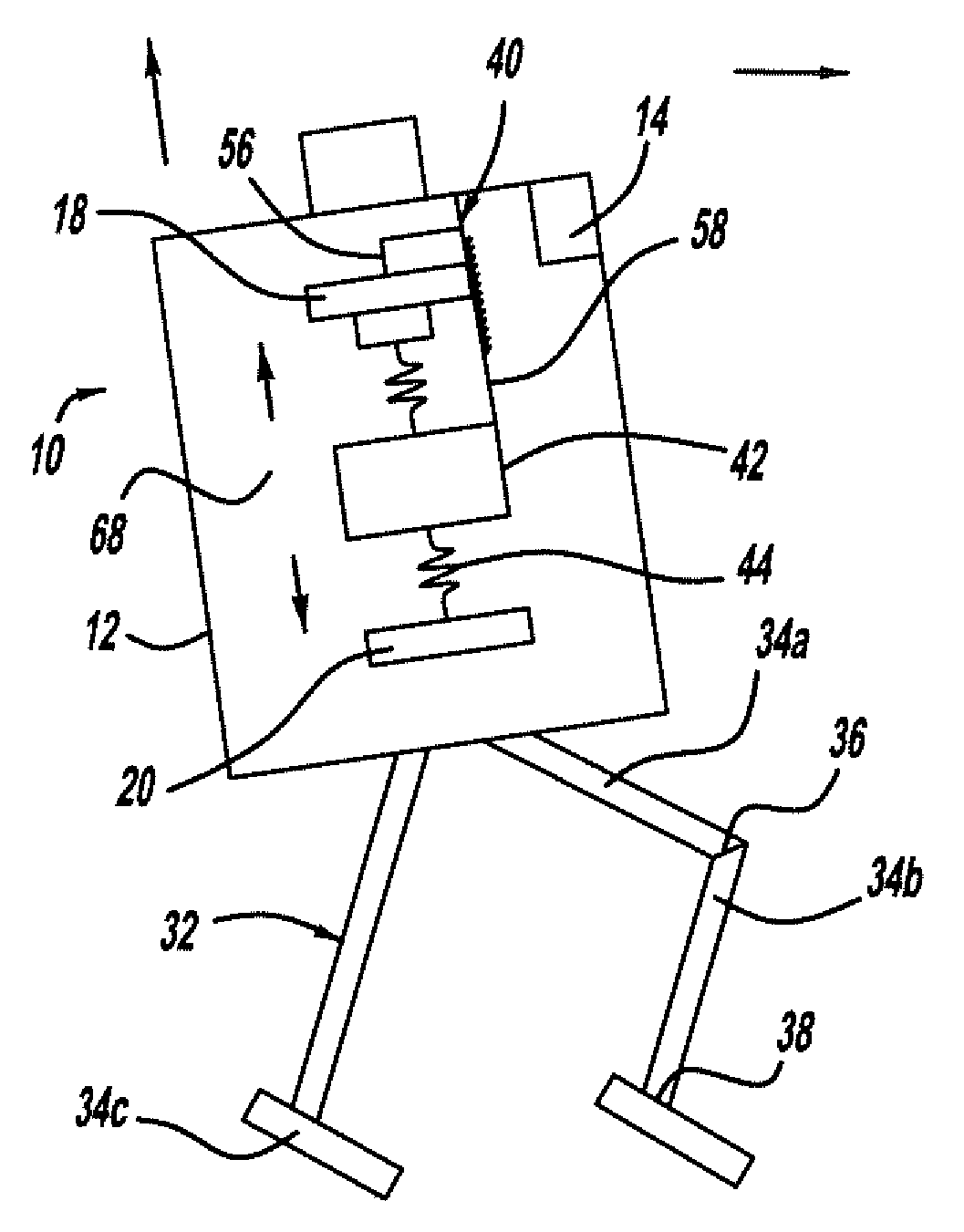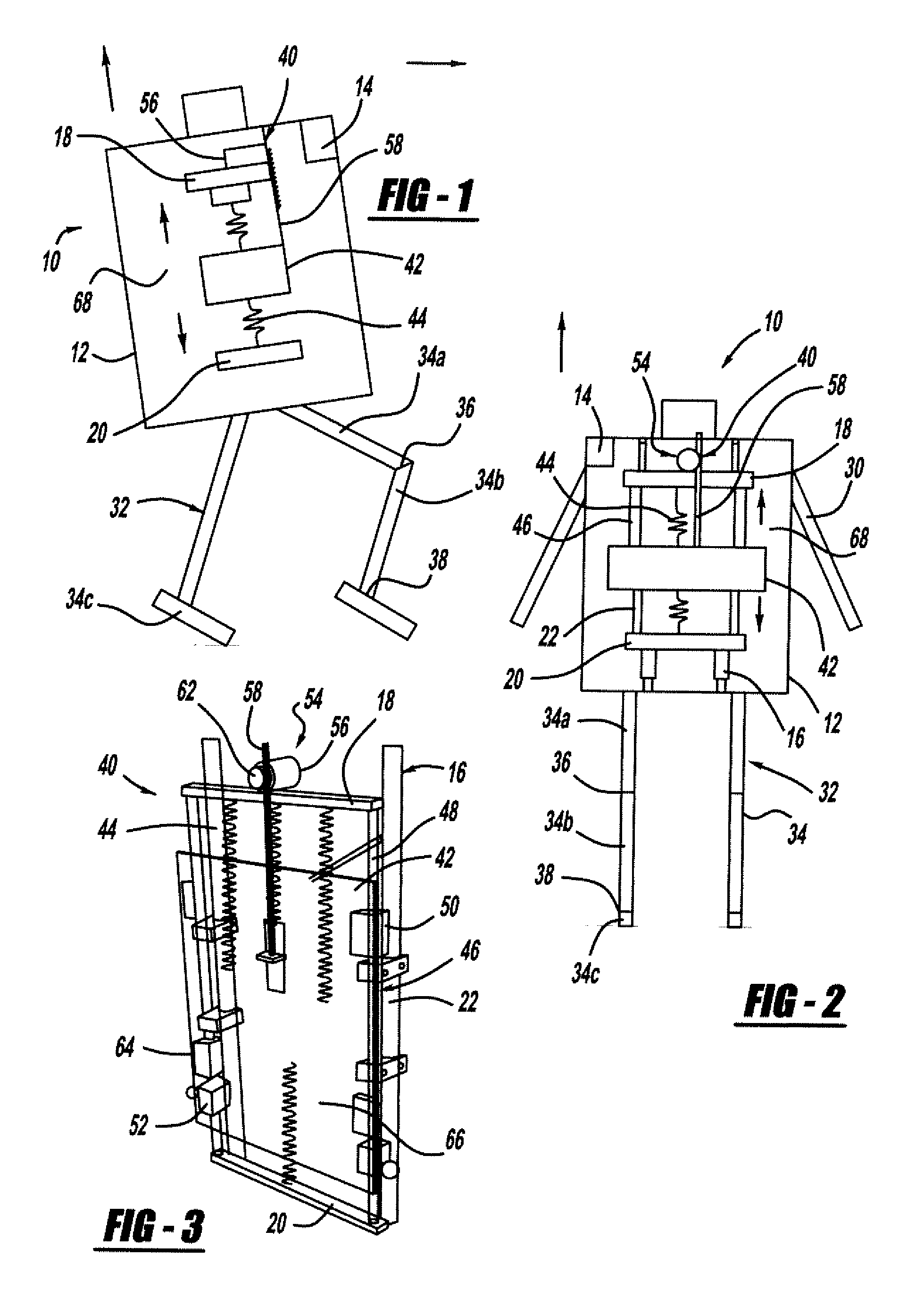Energy efficient robotic system
a robotic system and energy-efficient technology, applied in the direction of machines/engines, manufacturing tools, transportation and packaging, etc., can solve the problems of reducing the energy storage capacity of most robotic systems, requiring greater energy expenditure of bipedal robots, and reducing the efficiency of controlled gaits. energy-efficient
- Summary
- Abstract
- Description
- Claims
- Application Information
AI Technical Summary
Benefits of technology
Problems solved by technology
Method used
Image
Examples
Embodiment Construction
)
[0015]Referring to FIGS. 1-5, an energy efficient robotic system is illustrated. In this example, the robotic system is a powered, biped mobile robot 10, and in particular a passive-dynamic walking robot. The passive-dynamic walking robot 10 experiences vertically oriented cyclical or oscillatory variation during locomotion along a surface.
[0016]The robotic system 10 includes a body portion 12. The body portion 12 provides a housing. In this example, the body portion 12 has a box-like shape; however, the shape is non-limiting. The body houses a control mechanism 14 for controlling the functionality of the robot. For example, the control mechanism is a controller which includes a processor, a memory and input / output devices. The body portion 12 also houses an energy recapture mechanism, to be described, which provides a predetermined level of operational power for the robot. The body portion 12 includes a frame support structure 16. For example, the frame support structure may inclu...
PUM
 Login to View More
Login to View More Abstract
Description
Claims
Application Information
 Login to View More
Login to View More - R&D
- Intellectual Property
- Life Sciences
- Materials
- Tech Scout
- Unparalleled Data Quality
- Higher Quality Content
- 60% Fewer Hallucinations
Browse by: Latest US Patents, China's latest patents, Technical Efficacy Thesaurus, Application Domain, Technology Topic, Popular Technical Reports.
© 2025 PatSnap. All rights reserved.Legal|Privacy policy|Modern Slavery Act Transparency Statement|Sitemap|About US| Contact US: help@patsnap.com



